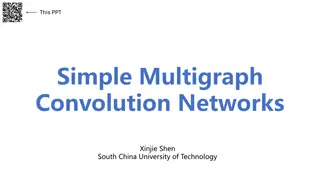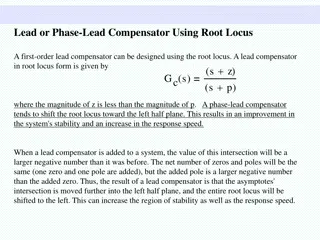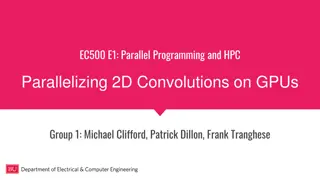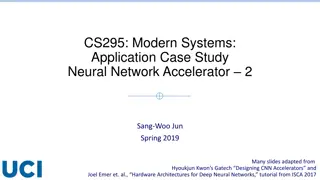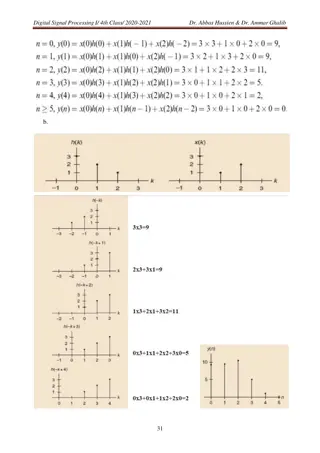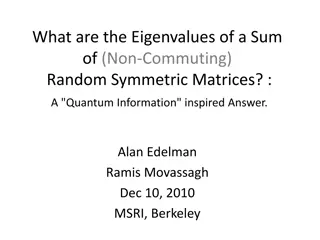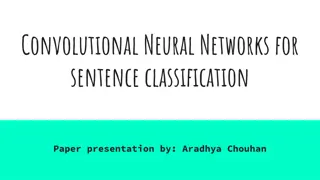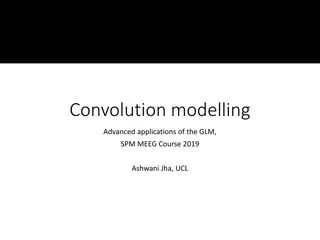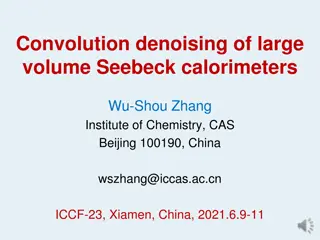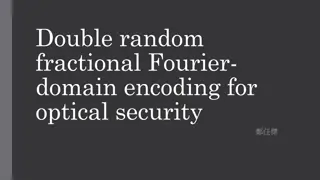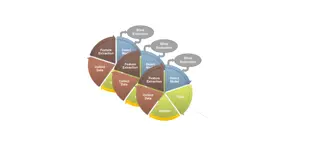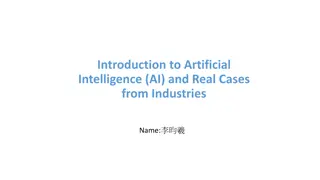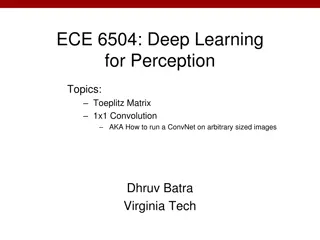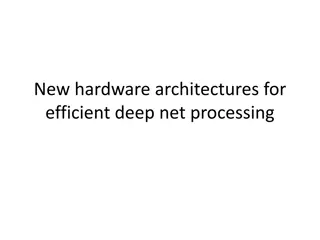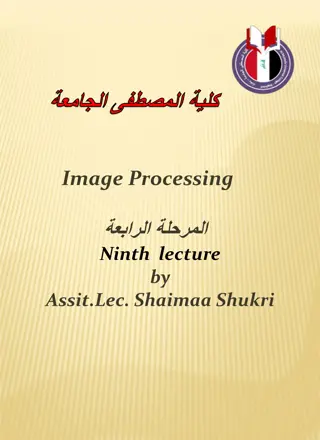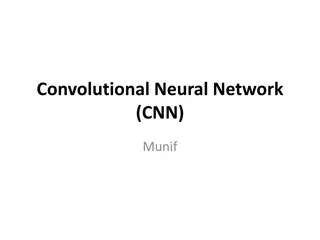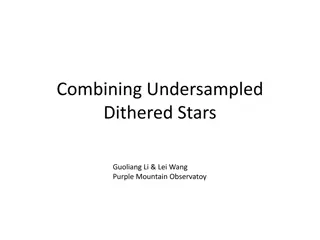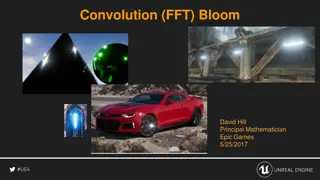Localised Adaptive Spatial-Temporal Graph Neural Network
This paper introduces the Localised Adaptive Spatial-Temporal Graph Neural Network model, focusing on the importance of spatial-temporal data modeling in graph structures. The challenges of balancing spatial and temporal dependencies for accurate inference are addressed, along with the use of distri
3 views • 19 slides
Advancements in Simple Multigraph Convolution Networks by Xinjie Shen
Explore the latest innovations in simple multigraph convolution networks presented by Xinjie Shen from South China University of Technology. The research evaluates existing methods, such as PGCN, MGCN, and MIMO-GCN, and introduces novel techniques for building credible graphs through subgraph-level
3 views • 6 slides
Understanding Lead and Phase-Lead Compensators
Lead and Phase-Lead compensators play a crucial role in improving system stability and response speed. By using the root locus and frequency response methods, these compensators shift the root locus toward the left half-plane, adding positive phase over the frequency range. This leads to increased s
0 views • 16 slides
Exploring GPU Parallelization for 2D Convolution Optimization
Our project focuses on enhancing the efficiency of 2D convolutions by implementing parallelization with GPUs. We delve into the significance of convolutions, strategies for parallelization, challenges faced, and the outcomes achieved. Through comparing direct convolution to Fast Fourier Transform (F
0 views • 29 slides
Understanding the Need for Neural Network Accelerators in Modern Systems
Neural network accelerators are essential due to the computational demands of models like VGG-16, emphasizing the significance of convolution and fully connected layers. Spatial mapping of compute units highlights peak throughput, with memory access often becoming the bottleneck. Addressing over 300
0 views • 21 slides
Recent Developments on Super-Resolution: A Comprehensive Overview
Super-resolution technology aims to reconstruct high-resolution images from low-resolution inputs, with applications in video surveillance, medical diagnosis, and remote sensing. Various convolutional neural network (CNN) models have been developed, such as SRCNN, VDSR, ESPCN, and FSRCNN, each with
0 views • 12 slides
Digital Signal Processing I 4th Class 2020-2021 by Dr. Abbas Hussien & Dr. Ammar Ghalib
This content delves into Digital Signal Processing concepts taught in the 4th class of 2020-2021 by Dr. Abbas Hussien and Dr. Ammar Ghalib. It covers topics like Table Lookup Method, Linear Convolution, Circular Convolution, practical examples, and Deconvolution techniques such as Polynomial Approac
0 views • 4 slides
Understanding Eigenvalues in Quantum Information
Explore the eigenvalues of sums of non-commuting random symmetric matrices in the context of quantum information. Delve into the complexities of eigenvalue distributions in various scenarios, including random diagonals, orthogonal matrices, and symmetric matrix sums. Gain insights into classical and
0 views • 24 slides
Convolutional Neural Networks for Sentence Classification: A Deep Learning Approach
Deep learning models, originally designed for computer vision, have shown remarkable success in various Natural Language Processing (NLP) tasks. This paper presents a simple Convolutional Neural Network (CNN) architecture for sentence classification, utilizing word vectors from an unsupervised neura
0 views • 15 slides
Advanced Applications of Convolution Modelling in GLM and SPM MEEG Course 2019
Addressing difficulties in experimental design such as baseline correction, temporally overlapping neural responses, and systematic differences in response timings using a convolution GLM, similar to first-level fMRI analysis. The course focuses on the stop-signal task, EEG correlates of stopping a
0 views • 21 slides
Advanced Convolution Denoising Techniques for Large-Volume Seebeck Calorimeters
Cutting-edge research on convolution denoising methods for Seebeck calorimeters to reduce noise levels caused by temperature fluctuations. The study explores hardware design, mathematical principles, and examples of denoising applications, aiming to enhance measurement accuracy and stability in larg
0 views • 10 slides
Advanced Applications of GLM and SPM in M/EEG Course 2018
This course delves into utilizing Convolution GLM to address challenges such as baseline correction, overlapping neural responses, and systematic response timing differences in EEG experiments. It focuses on the stop-signal task, EEG correlates of movement stopping, and MEG data analysis. The course
0 views • 26 slides
Optical Security with Double Random Fractional Fourier Domain Encoding
Utilizing double random fractional Fourier domain encoding for optical security involves encryption and decryption methods based on the fractional Fourier transform of various orders, involving specific mathematical operations and notations. The process includes transforming the input function, encr
0 views • 13 slides
Analysis of Deep Learning Models for EEG Data Processing
This content delves into the application of deep learning models, such as Sequential Modeler, Feature Extraction, and Discriminator, for processing EEG data from the TUH EEG Corpus. The architecture involves various layers like Convolution, Max Pooling, ReLU activation, and Dropout. It explores temp
0 views • 15 slides
Exploring Artificial Intelligence and Computer Vision in Industries
Delve into the world of Artificial Intelligence (AI) with real industry cases. Learn about Natural Language Processing (NLP) and Computer Vision through examples and practical exercises. Understand NLP's use of probability statistics, intent, utterance, entity, and session elements. Discover how Com
0 views • 13 slides
Understanding Toeplitz Matrix 1x1 Convolution in Deep Learning
Explore the concept of Toeplitz Matrix 1x1 Convolution in deep learning for processing arbitrary-sized images. Discover how this technique enables running ConvNets on images of various dimensions efficiently, making use of matrix multiplication with Toeplitz matrices to achieve convolution. Dive int
0 views • 20 slides
Exploring Efficient Hardware Architectures for Deep Neural Network Processing
Discover new hardware architectures designed for efficient deep neural network processing, including SCNN accelerators for compressed-sparse Convolutional Neural Networks. Learn about convolution operations, memory size versus access energy, dataflow decisions for reuse, and Planar Tiled-Input Stati
0 views • 23 slides
Understanding Edge Detection in Image Processing
Edge detection is a fundamental operation in image processing, crucial for identifying object boundaries based on rapid changes in brightness. This process involves detecting areas of discontinuity in gray-level values to locate edges, which hold significant information about objects in an image. Co
0 views • 12 slides
Understanding Convolutional Neural Networks (CNN) in Depth
CNN, a type of neural network, comprises convolutional, subsampling, and fully connected layers achieving state-of-the-art results in tasks like handwritten digit recognition. CNN is specialized for image input data but can be tricky to train with large-scale datasets due to the complexity of replic
0 views • 22 slides
Advanced Image Processing Techniques for High-Quality Reconstruction
Cutting-edge methods in astrophotography, such as deconvolution and pixel convolution effects, are explored in this detailed presentation. These techniques offer superior image restoration compared to traditional algorithms, emphasizing the importance of addressing pixelation effects to achieve high
0 views • 9 slides
Understanding Rebinning: A Data Resampling Technique
Rebinning is a data manipulation technique similar to smoothing, where N points are replaced by 1 point using a functional weighting. This process involves resampling data, linear interpolation, boxcar averaging, and convolution with a kernel function. It is essential to consider boundary effects an
0 views • 4 slides
Understanding Bloom Effects in Game Design
Bloom effects, such as weak scattering and convolution, enhance the visual appeal of games by simulating light scattering. They add realism and customization options to game graphics, improving the overall visual experience. Weak scattering causes subtle yet impactful effects like glare and diffract
1 views • 14 slides

